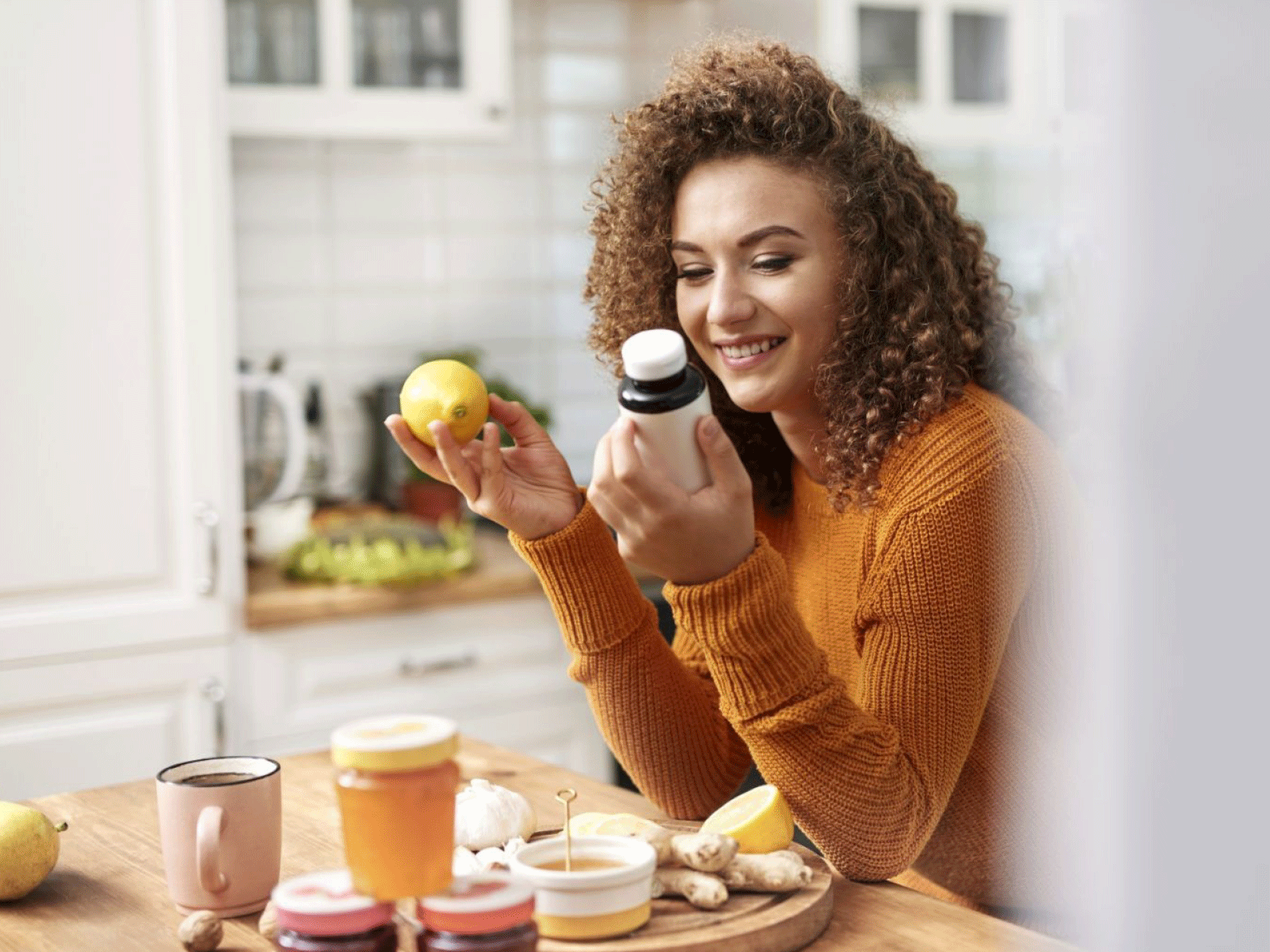How to really get enough vitamin D during the winter and summer months.
There are a lot of unnecessary things pitched as ‘essential’ in the world of health and fitness. The truth is, you can forget the fads; getting all of your vitamins and minerals through a balanced diet and regular exercise are the best things you can do to support your body.
However, when it comes to vitamin D, things get a little more complex. It’s known as the sunshine vitamin for a reason; our bodies absorb most of this vitamin through sunshine, rather than our food. “On average you should aim to be getting 10 micrograms (400 IU) of vitamin D a day,” says Dr Samantha Wilde, women’s health clinical lead at Bupa Health Clinics.
While you can get small amounts of vitamin D from natural food sources such as egg yolks, fortified cereals and oily fish (salmon, sardines, and mackerel), “eating these alone would not be enough to achieve the recommended daily amount of 10 micrograms.”
You may also like
Vitamin D: everything you need to know, from its benefits to the different types
Why is vitamin D important?
Skipping on your vitamin D isn’t an option, as it’s essential for a strong body and mind. Traditionally, it’s been known for “maintaining healthy and strong bones, muscles and teeth, as well as helping you absorb calcium and phosphates from your diet,” Dr Wilde reminds us.
“A lack of vitamin D can cause your bones and muscles to become weak. In adults this can lead to osteomalacia (softened bones which cause dull aching pains).” This mainly affects the lower back, hips, pelvis and ribs, “causing exercise, such as walking, to become slower and more difficult and put you at a greater risk of fracturing,” Dr Wilde adds.
However, there’s a reason why you see a lot of talk about vitamin D during winter: “It supports a strong immune system to help keep you well and live an active life,” says Dr Wilde.

How to increase your vitamin D levels
The simple answer is to get out into the sun. But how long do you actually need to spend outside? The answer depends on many different factors, such as the colour of your skin, how much skin is exposed and how intense the sunlight is. “While it is hard to estimate the exact amount of time you need to spend in the sun, it is often less time than you think,” says Dr Wilde.
“A rough estimate would be just nine minutes of lunchtime sunlight for those with lighter skin tones, and those with darker skin tones may need up to 25 minutes of sun exposure for your body to produce adequate levels of vitamin D.”
The more skin you have exposed to the sun, the quicker your body will produce vitamin D. However, “when spending time in the sun a balance needs to be struck. Too much UV from the sun causes sunburn, premature ageing and increases your risk of skin cancer. It’s always important to be aware of the sun and protect your skin by applying sunscreen (yes, vitamin D can still be absorbed through sunblock), wearing suitable clothing and keeping hydrated,” says Dr Wilde.
You may also like
“I tried drinking eight glasses of water every day and the results surprised me”
And you do really need to go outside to reap the benefits of sunlight. “Sitting inside by a sunny window won’t help you produce your daily vitamin D as the ultraviolet B rays from the sun, which are needed to produce vitamin D, can’t get through the glass,” explains Dr Wilde.
In the UK, the NHS recommend that we take a vitamin D supplement from October to April, as we get very limited sun exposure. Outside of these times, “most people can produce enough vitamin D from being in sunlight for short periods each day, with their face, hands, forearms or lower legs uncovered,” says Dr Wilde.
For those who aren’t easily able to get outside, it is recommended that they continue to take vitamin D supplements, even throughout the summer months. “It is also recommended that Black, Asian or people with darker skin should take vitamin D all year round,” Dr Wilde adds.
Follow @StrongWomenUK on Instagram for the latest workouts, delicious recipes and motivation from your favourite fitness experts.
Images: Getty
Source: Read Full Article
